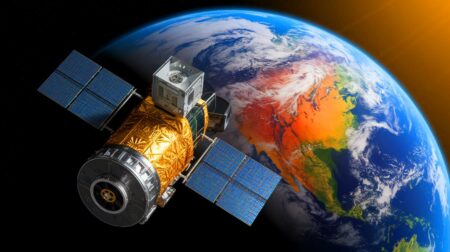| IN A NUTSHELL |
|
In a significant move to enhance maritime defense, Textron Systems has secured a pivotal contract with the United States Navy. This deal, valued at an impressive $100 million, signifies a leap forward in the development and integration of advanced uncrewed surface vehicles. These vehicles, known as the Common Uncrewed Surface Vehicle (CUSV), represent a critical element in modern naval operations. As Textron Systems continues to lead in autonomous maritime technologies, the implications of this contract resonate well beyond the immediate scope, promising to redefine naval capabilities and strategic advantage.
Unveiling the Potential of MCM USV Craft
Textron Systems is at the forefront of designing and supporting the development of the Mine Countermeasures (MCM) Unmanned Surface Vehicle (USV) craft. This initiative underscores the company’s prowess in creating sophisticated uncrewed systems that enhance naval operations. David Phillips, Senior Vice President of Air, Land and Sea Systems at Textron, emphasized the company’s commitment to advancing the Navy’s missions through innovative software development. The CUSV craft stands as a testament to this commitment, serving as the U.S. Navy’s first USV program of record.
With thousands of operational hours under its belt, Textron leverages its expertise to integrate critical multi-mission payload capabilities into naval USVs. This contract facilitates software updates and payload integration, which are pivotal for enhancing the operational effectiveness of these vehicles. Furthermore, the company is set to demonstrate potential future MCM mission packages, solidifying its role as a leader in naval innovation.
Innovations in Maritime Autonomy
The introduction of the TSUNAMI family of autonomous maritime surface vessels marks a new chapter in maritime autonomy. Textron Systems is pioneering this innovation to significantly enhance the versatility and operational effectiveness of uncrewed platforms. The TSUNAMI system is designed to be a low-cost, rapidly deployable solution that integrates seamlessly into existing maritime platforms.
Textron’s commitment to innovation is evident in its focus on developing advanced autonomy solutions. The company aims to empower naval forces with superior situational awareness, operational efficiency, and strategic advantage. By investing in technologies like TSUNAMI, Textron positions itself at the forefront of the future of autonomous naval operations.
Strategic Implications for Naval Operations
The strategic implications of Textron’s recent contract are profound. As the original designer and developer of the MCM USV software, Textron is uniquely positioned to upgrade and enhance the craft’s capabilities. The integration of advanced software and payloads will enable these vehicles to perform a variety of complex missions, ranging from mine neutralization to intelligence, surveillance, and reconnaissance (ISR).
This contract also highlights the importance of reliable, high-performance vessels in modern naval operations. By utilizing Brunswick Corporation’s vessels, Textron ensures that its TSUNAMI family of products can be built at scale, reinforcing the U.S. Navy’s maritime force with proven autonomy control systems. This strategic partnership not only enhances the Navy’s operational capabilities but also sets a new standard for future naval engagements.
The Future of Autonomous Naval Warfare
Textron Systems’ advancements in autonomous naval technologies are reshaping the landscape of maritime warfare. By integrating cutting-edge systems like the TSUNAMI into naval operations, Textron is redefining what is possible in terms of autonomous defense. The company’s investment in persistent, intelligent, and collaborative systems ensures that the U.S. Navy remains at the forefront of innovation in complex maritime environments.
Textron’s focus on delivering transformative capabilities aligns with the Navy’s strategic goals of achieving superior situational awareness and operational efficiency. As the company continues to push the boundaries of what’s possible in uncrewed systems, it paves the way for a future where autonomous vessels are integral to naval strategy and operations.
The developments by Textron Systems in advancing uncrewed maritime technologies present exciting possibilities for the future of naval defense. As these innovations continue to unfold, one must ponder: How will the integration of autonomous systems transform the balance of power in global maritime operations?
Did you like it? 4.6/5 (25)









Wow, $100 million is a big deal! What exactly will this mean for global naval balance? 🤔